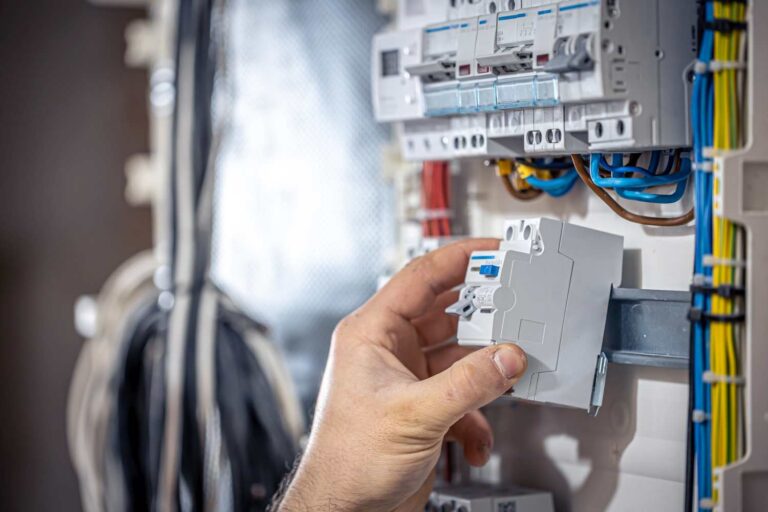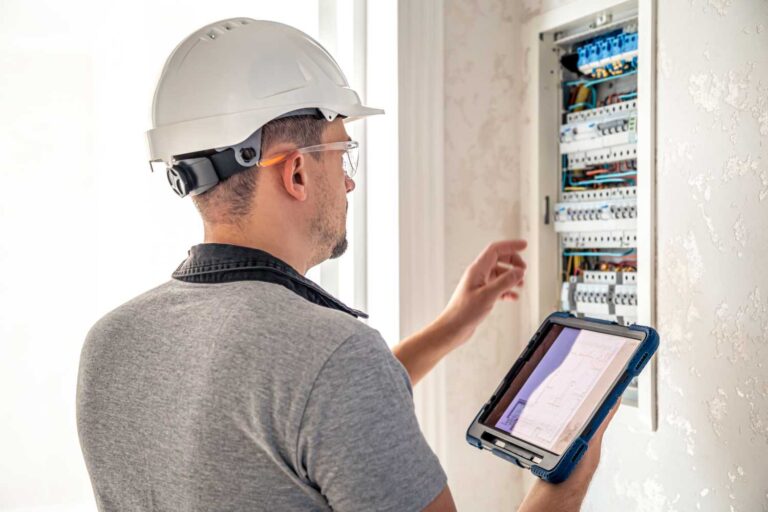- 17 September 2024
- 4 min read
Solutions for repeatedly tripping fuses

Why does the fuse activate?
A fuse activates as a protective measure to prevent electrical hazards such as fires or appliance damage. It serves as a safeguard that interrupts the power flow when it detects an abnormal condition in the electrical circuit. Here are the primary reasons why a fuse might activate:
- Circuit overload – the most common cause of fuse trip is when too many appliances or devices draw more electricity than the circuit can handle, leading to an overload. This excess current causes the fuse to heat up and melt, breaking the circuit and stopping the flow of electricity.
- Short circuit – this occurs when a live wire comes into contact with a neutral wire, causing a sudden increase in current flow. This can happen due to damaged wires, loose connections, or faulty appliances, which can dramatically increase the current flow and trip the fuse.
- Ground fault – similar to a short circuit, a ground fault occurs when a live wire touches a ground wire or a metal part that is not meant to carry electricity (like the metal box of an appliance). This situation can also cause a surge in current flow, tripping the fuse.
- Appliance faults – faulty or malfunctioning appliances can also cause fuses to blow. This can happen due to internal defects within the appliance that cause it to draw more current than usual or create a short circuit. It is wise to seek fuse replacement in such cases.
- Aged wiring – over time, wiring insulation can degrade, which may lead to exposed wires that can touch each other or the metal casing, creating short circuits or ground faults.
- Environmental factors – conditions such as moisture, dirt, or corrosion can also affect the electrical system, leading to circuit disruptions that trigger the fuse.
If your fuses are tripping frequently, it is advisable to inspect the affected circuits and appliances for potential issues. Redistribution of high-load appliances, upgrading circuit capacity, or fuse replacement can often resolve these issues. However, for safety and proper diagnostics, it’s best to consult with a professional electrician. They can identify the root cause and ensure that your electrical system is both safe and compliant with electrical codes.
Proper adjustment of the fuse to the electrical system
To ensure safety and efficiency in an electrical system, fuses must be correctly matched to their circuits. Proper fuse adjustment involves selecting the right fuse type and rating based on the maximum expected current and the nature of the connected load. Here are essential steps to properly adjust your fuses:
- Determine maximum load – calculate the total current draw of all devices on the circuit. This includes considering both regular operational loads and potential starting currents of appliances.
- Select appropriate fuse type – choose between slow-blow or fast-acting fuses. Slow-blow fuses are suited for circuits with motors that may draw high startup currents, preventing unnecessary fuse blows. Fast-acting fuses are ideal for protecting sensitive electronics.
- Consider the wire size – ensure the fuse rating does not exceed the capacity of the wires in the circuit. This is crucial to prevent wire overheating and potential fire hazards.
- Install the correct fuse rating – use a fuse whose amp rating slightly exceeds the normal operating current but below the wire and breaker capacity. This will protect against short circuits and overloads without premature fuse blowing.
- Regular inspection and testing – regularly check fuses for signs of wear or damage and test circuit loads to ensure they remain within safe limits. Replace any fuses that show signs of deterioration or corrosion.
By adhering to these guidelines, you can optimize the safety and functionality of your electrical system. Regular maintenance and periodic reviews of your system by a qualified electrician can also help in detecting any potential issues early, ensuring continued protection and efficiency.
Repair of repeatedly tripped fuses – how to do it?
To fix a fuse that trips repeatedly, first identify the cause. Start by unplugging all devices and appliances on the affected circuit. Reconnect them one at a time to pinpoint the culprit. If no single appliance is at fault, check for circuit overloads and redistribute power consumption accordingly. Inspect the wiring for any signs of damage or wear and replace any faulty wires. If the issue persists, consider upgrading the fuse to a higher capacity or switching to a circuit breaker system. For complex problems or any doubts, always consult a professional by searching the web for electricians near me.
What to pay attention to when selecting fuses?
When selecting fuses, ensure the amp rating matches the maximum expected current of the circuit to prevent overload. Additionally, consider the fuse type (slow-blow or fast-acting) based on the nature of the connected devices, with slow-blow fuses suitable for motors and fast-acting fuses ideal for sensitive electronics.
You might be interested in...
- Electrician's advice

17 September 2024
Obtaining an electrical safety certificate for landlords – what is it?
Obtaining an electrical safety certificate is a crucial responsibility for landlords, ensuring that rental properties are safe for tenants. This certificate, often in the form of an Electrical Installation Condition Report (EICR), is a document provided after a thorough inspection of the property’s electrical installations. It highlights any potential issues or hazards, ensuring compliance with safety standards. Landlords must address any identified problems to maintain safety and legal compliance. Regular inspections and obtaining this certificate demonstrate a commitment to tenant safety and help avoid legal complications.